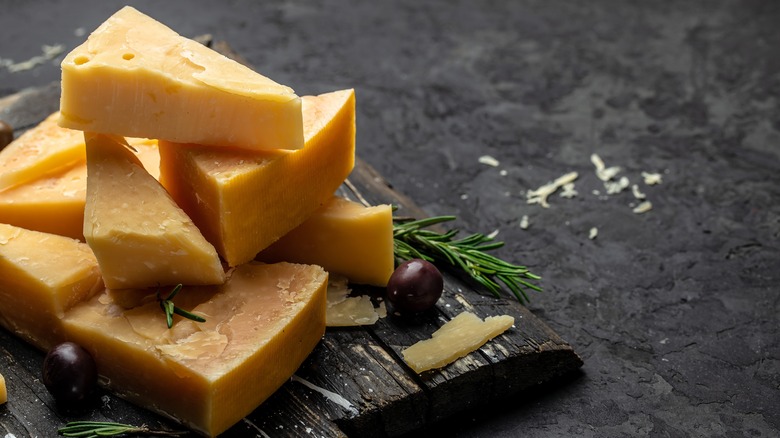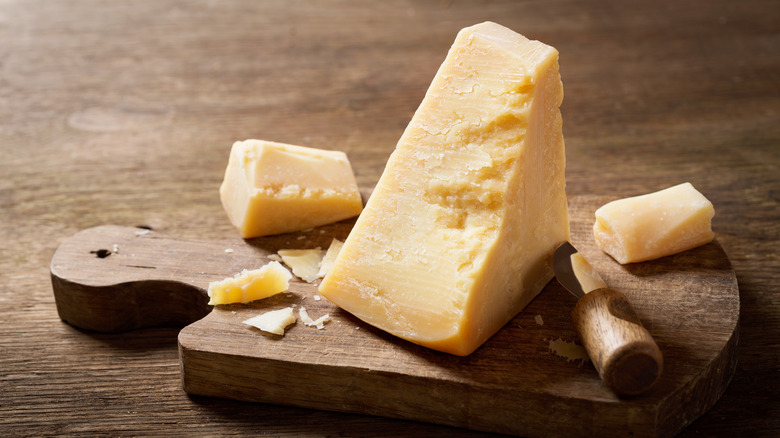The Reason You Should Never Put Hard Cheese In A Blender
Tools are not interchangeable. You can't use a hammer to cut a piece of wood. The same thing goes for kitchen appliances. You can't make ice in an oven or strain pasta with a pitcher. While that is ridiculously obvious, there are some items that people tend to confuse. For instance, a blender is not a food processor. It is not designed to perform the same tasks. For example, you should never put hard, dry foods, such as Parmesan cheese, into a blender.
There are some similarities between the two devices. You should never put hot food into blenders or food processors, for instance. However, a blender is physically different from a food processor. Typically, a blender has a fixed blade, and the chamber is tall (because it is designed for pouring liquids). Additionally, the blades have steeper angles which bend in different directions to whirl and blend liquid-based ingredients. Hard, dry ingredients can break down into chunks that wedge under those blades and ruin the motor of your blender.
How to prepare hard cheeses
Unfortunately, if all you have is a blender, hard cheeses will have to be prepped by hand. Among the common mistakes that people make with knives is assuming a sharp chef's knife will suffice in this case. That won't work because hard cheeses do not slice. They crumble. To chip away hard cheese, it's best to use a grana knife. This tear-shaped tool lets you safely dig in and break away the cheese.
Another way to prepare hard cheeses by hand is to use a grater. A cheese grater, as you probably know, is a rasp that you use to shred or grate cheese. While protecting your hand, simply drag the block of cheese back and forth across the grate.
If, however, you have a food processor, that might be the best way to go. It is quick and efficient. Unlike a blender, you can use it on hard, dry foods, such as cheese without fear of damaging the appliance. Just make sure you select the proper blade for the task and you're good to go.

